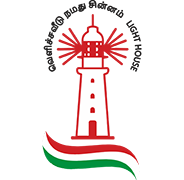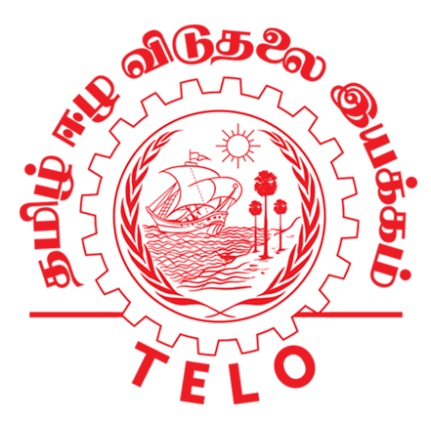Sri Lanka’s ‘Caa1’ sovereign rating has been place on review for downgrade by Moody’s citing weak external position and decreasing institutional strength.
“The decision to place the ratings under review for downgrade is driven by Moody’s assessment that Sri Lanka’s increasingly fragile external liquidity position raises the risk of default,” Moody’s said in a statement.
“This assessment reflects governance weaknesses in the ability of the country’s institutions to take measures that decisively mitigate significant and urgent risks to the balance of payments.
The full statement is reproduced below:
Rating Action: Moody’s places Sri Lanka’s Caa1 rating under review for downgrade
19 Jul 2021
Singapore, July 19, 2021 — Moody’s Investors Service (“Moody’s”) has today placed the Government of Sri Lanka’s Caa1 foreign currency long-term issuer and senior unsecured debt ratings under
review for downgrade.
The decision to place the ratings under review for downgrade is driven by Moody’s assessment that Sri Lanka’s increasingly fragile external liquidity position raises the risk of default. This assessment reflects governance weaknesses in the ability of the country’s institutions to take measures that decisively mitigate significant and urgent risks to the balance of payments.
Although the government has secured some financing, mainly from bilateral sources, its financing options remain narrow with borrowing costs in international markets still prohibitive. Absent large and sustained capital inflows through a credible external financing strategy, Moody’s expects Sri Lanka’s foreign exchange reserves to continue declining from already low levels, further eroding its ability to meet sizeable and recurring external debt servicing needs, and increasing balance of payment risks. Extremely weak debt affordability — with interest payments absorbing a very large share of the government’s very narrow revenue base — compounds the debt repayment challenge.
The rating review will focus on assessing whether the sovereign is able to use a period of time provided by its current foreign exchange reserves and bilateral arrangements to implement measures that widen and increase its financing sources for the medium term, and thereby avoid default for the foreseeable future.
Sri Lanka’s foreign currency country ceiling has been lowered to Caa1 from B3, while the local currency country ceiling remains unchanged at B1. The three-notch gap between the local currency ceiling and the sovereign rating balances relatively predictable institutions and government actions against the low and declining foreign exchange reserves adequacy that raises macroeconomic risks as well as the challenging domestic political environment that weighs on policymaking.
The three-notch gap between the foreign currency ceiling and local currency ceiling takes into consideration the high level of external indebtedness and the risk of transfer and convertibility restrictions being imposed given low foreign exchange reserves adequacy, with some capital flow management measures already imposed. These ceilings typically act as a cap on the ratings that can be assigned to the obligations of other entities domiciled in the country.
RATINGS RATIONALE / FACTORS THAT COULD LEAD TO AN UPGRADE OR DOWNGRADE OF THE RATINGS RATIONALE FOR INITIATING THE REVIEW FOR DOWNGRADE
Sri Lanka’s low and declining foreign exchange reserves adequacy, limited and narrowing set of external financing options for the government, and the extremely large share of government revenue taken up by
interest payments raises the risk of debt default. The increasing fragility of the situation and continued worsening of credit metrics without decisive actions are indications that institutional credibility and effectiveness have weakened compared with Moody’s prior assessment. In contrast to the urgency of the situation — and notwithstanding the government’s stated commitment to repay its debt — Moody’s expects a credible and durable financing strategy to only materialise over a number of years.
Meanwhile, Moody’s expects the coverage by foreign exchange reserves of external repayments to continue
falling from already low levels. As of the end of June, Sri Lanka’s foreign exchange reserves (which in Moody’s definition exclude gold and Special Drawing Rights) amounted to just around $3.6 billion, down 30% since the start of the year and insufficient to cover the government’s annual external debt repayments alone of around $4-5 billion over the next 4-5 years.
Taking into account plausible projections for the balance of payments, the country’s foreign exchange reserves will fall further over the next 2-3 years, unless Sri Lanka manages to markedly raise capital inflows.
Moody’s baseline scenario assumes that the government and the Central Bank of Sri Lanka (CBSL) will
continue to secure some foreign exchange resources and financing support through a combination of projectrelated multilateral loans, official sector bilateral assistance including central bank swaps, commercial bank loans, and the divestment of some state-owned assets — albeit at a relatively slow pace.
Measures introduced by CBSL, such as the required sale of a share of all inbound remittances and export proceeds to the central bank, will also generate additional reserves, while capital flow management measures restricting imports and outbound remittances and investment will help retain some foreign exchange resources in the country.
These measures can only shore up reserves temporarily and marginally; they also come at a cost to the economy.
Meanwhile, Sri Lanka’s current account deficit is likely to remain stable and relatively narrow compared to peers at around 1-2% of GDP over the next few years, with the gradual recovery of the tourism sector partly hampered by the ongoing wave of infections and border restrictions. Foreign direct investment has the potential to pick up with the development of the Colombo Port City and the government’s privatisation plans, although amounts are likely to increase only gradually over time.
By contrast, Moody’s does not assume that the government will enter into programme-based financing facilities with multilateral development partners at this stage, which significantly narrows its external financing options.
Furthermore, while the government has historically relied on international market access to finance its fiscal deficits and external repayment needs, borrowing costs remain prohibitive with Sri Lanka’s government bond spreads to US Treasuries still very wide at more than 1600 basis points, compared to around 500 basis points before the onset of the coronavirus pandemic.
Sri Lanka’s long-standing fiscal weaknesses complicate the government’s policy choices. Moody’s expects Sri Lanka’s economy to grow by around 3.5% this year, taking into account less stringent pandemic-containment measures compared to last year. Economic growth is likely to accelerate further next year on base effects and the reopening of borders, providing some boost to government revenue.
However, even with some revenue increases, Moody’s estimates that the government’s fiscal deficit will remain wide at around 9.5-10% of GDP this year and average 8.5% over the next two years. In turn, the government’s debt burden will likely rise further to around 110% of GDP over 2022-23, from around 100% at the end of 2020 and around 87% in 2019.
Extremely weak debt affordability magnifies debt repayment risks. Interest payments exceeded 70% of government revenue in 2020 and will likely remain around 60-70% over the next few years — highest across sovereigns that Moody’s rates by some distance — even as revenue rebounds from very low levels. Indeed, government revenue is likely to remain around 10% of GDP over the next few years, unless the government’s efforts to enhance tax administration and impose special taxes can sizeably and durably expand its revenue base.
While domestic resources have been sufficient so far to finance the government’s wider deficit in local
currency, limited fiscal resources impose difficult policy choices to rationalise social spending and
development expenditure, if interest payments continue to be prioritised.
Given very weak credit metrics, there is material risk that falling reserves precipitate a crisis of confidence, involving a negative spiral of a rapidly depreciating exchange rate, rising inflation, higher domestic interest rates, higher debt payments in local currency terms, and a weaker domestic economy. In this scenario, default risk would increase sharply. Conversely, the sovereign’s track record at securing some financing options, from foreign and domestic investors, may keep such an adverse scenario at bay for some time.
The rating review will focus on assessing whether the sovereign is able to use a period of time provided by its current foreign exchange reserves and bilateral arrangements to implement measures that widen and increase its financing sources for the medium term, and thereby avoid default for the foreseeable future.
ENVIRONMENTAL, SOCIAL, GOVERNANCE CONSIDERATIONS
Sri Lanka’s ESG Credit Impact Score is highly negative (CIS-4), reflecting its highly negative exposure to environmental and social risks. Ongoing challenges to institutional and policy effectiveness constrain the government’s capacity to address ESG risks.
The exposure to environment risk is highly negative (E-4 issuer profile score). Variations in the seasonal monsoon can have marked effects on rural household incomes and real GDP growth: while the agricultural sector comprises only around 8% of the total economy, it employs almost 30% of Sri Lanka’s total labour force.
Natural disasters including droughts, flash floods and tropical cyclones that the country is exposed to also contribute to higher food inflation and import demand. Moreover, ongoing development projects to improve urban connectivity have increased the rate of deforestation, although the country continues to engage development partners to preserve its natural capital, such as its mangroves.
The exposure to social risk is highly negative (S-4 issuer profile score). Balanced against Sri Lanka’s relatively good access to basic education, which has continued to improve throughout the country in the post-civil war period, are weaknesses in the provision of some basic services in more remote and rural areas, such as water, sanitation and housing.
As the country’s population continues to grow, the government will face greater constraints in delivering high-quality social services and developing critical infrastructure amid ongoing fiscal
pressures.
The influence of governance is highly negative (G-4 issuer profile score). While international surveys point to stronger governance in Sri Lanka relative to rating peers, including in judicial independence and control of corruption, institutional challenges remain, particularly in the pace and effectiveness of reforms.
Domestic political developments also tend to weigh on fiscal and economic policymaking.
The ratings would likely be confirmed at their current level if the risk of external debt default were to diminish materially and durably. This could stem from the government demonstrating its capacity to use short-term financing sources as a means to gain time to secure a medium-term external financing strategy that maintained a manageable cost of debt, and a faster and more sustained buildup in non-debt creating foreign exchange inflows.
Additionally, likely implementation of fiscal consolidation measures, particularly greater
revenue mobilisation, that pointed to a material narrowing of fiscal deficits in the next few years and
contributed to lower annual borrowing needs, would also support a confirmation of the rating.
The rating would likely be downgraded in a status quo scenario where the financing of Sri Lanka’s large
external debt repayments remained uncertain while foreign exchange reserves adequacy still looked likely to continue deteriorating.
GDP per capita (PPP basis, US$): 13,215 (2020 Actual) (also known as Per Capita Income)
Real GDP growth (% change): -3.6% (2020 Actual) (also known as GDP Growth)
Inflation Rate (CPI, % change Dec/Dec): 4.6% (2020 Actual)
Gen. Gov. Financial Balance/GDP: -11.1% (2020 Actual) (also known as Fiscal Balance)
Current Account Balance/GDP: -1.3% (2020 Actual) (also known as External Balance)
External debt/GDP: 61.0% (2020 Actual)
Economic resiliency: ba2
Default history: No default events (on bonds or loans) have been recorded since 1983.
On 14 July 2021, a rating committee was called to discuss the rating of the Sri Lanka, Government of.
The main points raised during the discussion were: The issuer’s economic fundamentals, including its economic strength, have not materially changed. The issuer’s institutions and governance strength, have materially decreased. The issuer’s fiscal or financial strength, including its debt profile, has not materially changed. The issuer’s susceptibility to event risks has not materially changed.





